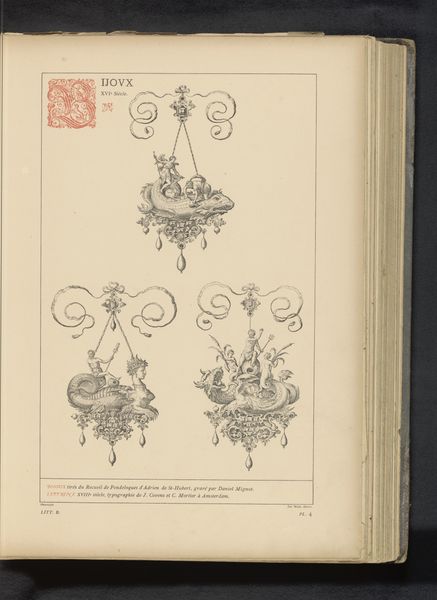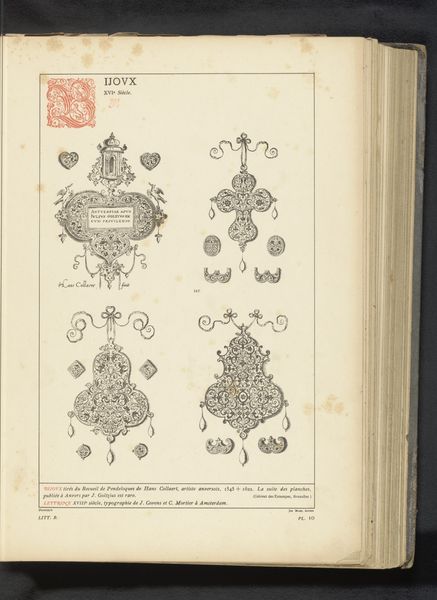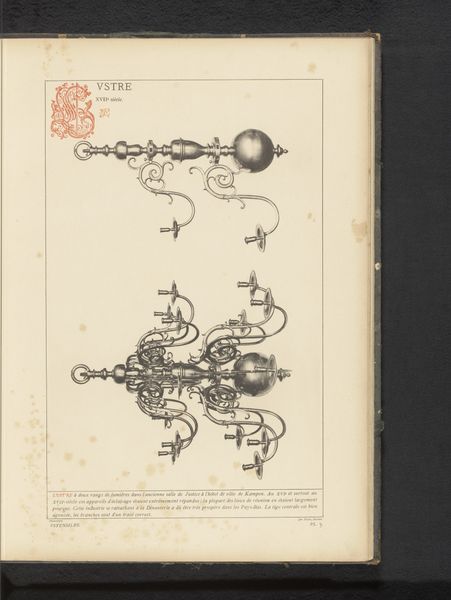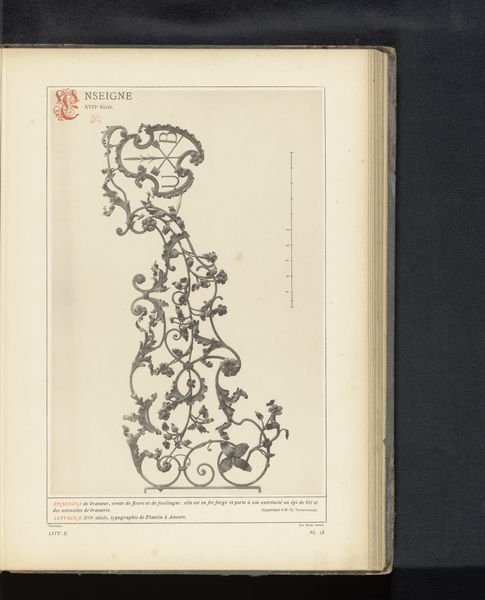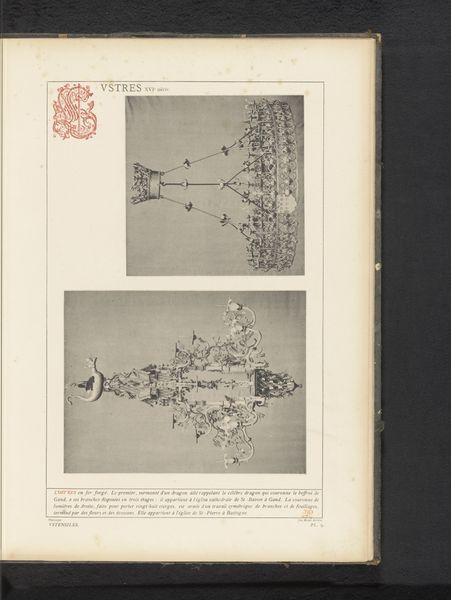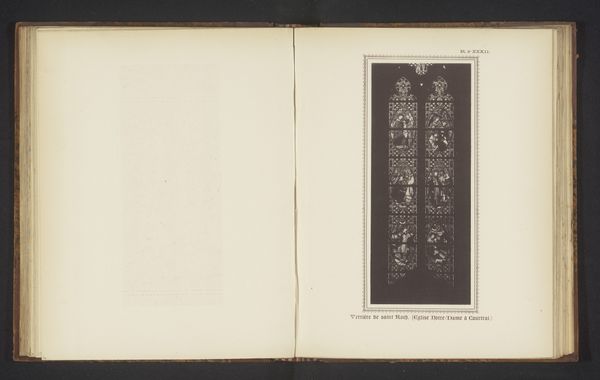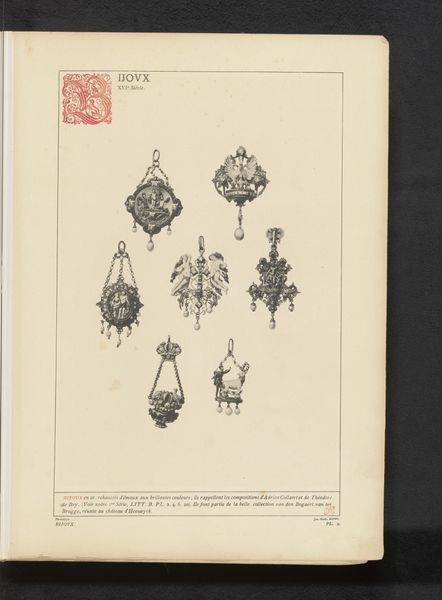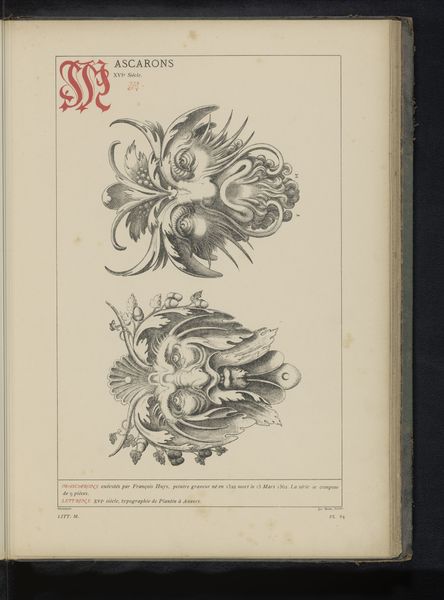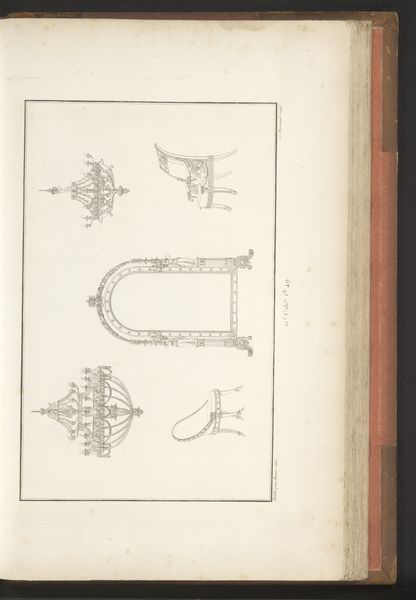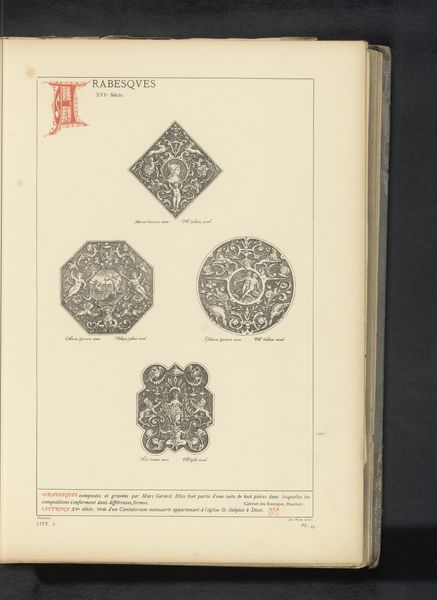
drawing, print, paper, engraving
#
drawing
# print
#
figuration
#
paper
#
decorative-art
#
engraving
Dimensions: height 334 mm, width 230 mm
Copyright: Rijks Museum: Open Domain
Curator: This engraving showcases a set of three jewelry designs before 1880, credited to Daniel Mignot. Note the precise lines and details achieved through the printmaking process. Editor: They seem to be floating like exotic jellyfish! Ethereal but with this implied weight from what looks like teardrop-shaped gemstones... Curious! Curator: Mignot was known for his ornamental prints, which were often used as templates for artisans. The jewelry illustrated would be very indicative of the period. Observe how they almost appear lace-like, constructed through meticulous and repeatable techniques. Editor: It makes you wonder who wore jewelry of this design? Like tiny fortresses of wealth dangling, so precious. The designs share elements of fantasy and floral beauty, as if the designer worked without reference points. It really lets my imagination run wild! Curator: It does evoke wonder, but also a clear commentary on status through materials and artistic ingenuity. One needs to remember how sumptuary laws at different points would often dictate access to materials and types of adornment. This speaks to the social implications of craftsmanship and fashion. Editor: Do you think designers always felt restrained? Like, there’s gotta be a creative urge to break away from the established way. To craft something absolutely individual, you know? Curator: Potentially. Yet, these visual designs provided opportunities for wealth to be seen. Artisans navigated parameters of production with innovative designs to satisfy social hierarchies. The ability to own jewelry in that era involved elaborate craft systems. Editor: Right, it’s so much more than “shiny things.” These prints capture more than what something looked like, it contains how jewelry played a role in expressing who you were…or, wanted to appear as to others. Curator: Indeed. These reproductive prints were powerful social agents. Editor: I keep coming back to how fragile but permanent they seem, that feels weird, right? Curator: On the contrary! Considering these images circulated broadly and offered material possibility within defined social boundaries… yes, both.
Comments
No comments
Be the first to comment and join the conversation on the ultimate creative platform.
